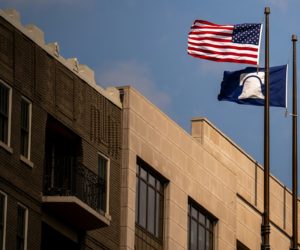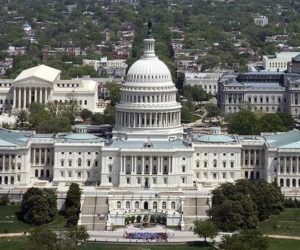Today marks the opening of the 2013-2014 US Supreme Court session.
Over the coming weeks I will be writing about some of the major cases to come before the Justices this term but today I thought I’d offer a brief primer on how the Court works as well as offer a quick list of some upcoming cases.
The Supreme Court annual session opens on 1st Monday in October and generally continues session until mid to late June with some breaks in December and February. Sometimes they will extend the term into July but that is rare, I believe the last time they did so was in 1974 during the Watergate crisis when they heard the tapes case.
Of course during the July-September period the Justices are still busy working preparing for the new session, reviewing upcoming cases and also deciding about hearing new cases during the upcoming term.
If you want to get a case heard by the Court it is not an easy process. First of course you need to have a case make it far enough through the process to be eligible to appeal to the Court. If you make it this far you apply to the court asking for what is called a Writ of Certiorari (usually shortened to cert).
The justices will review your application and if four of the nine vote to hear your case then it is put on the calendar. As you might imagine this does not happen often and there are even times where you have the votes but still don’t get heard. This is because the Justices are just as strategic and (if you forgive the term) political as anyone else.
Thus they will not only look at whether a case is worth hearing but also consider what the probable outcome is. If you are a liberal on a conservative leaning court or a conservative on a liberal leaning court then you might not want the case heard (better one bad ruling than a bad national precedent).
And for those tempted to make this just a liberal on a conservative court situation the same thing happened during the1950-1980 period when the court tilted quite a bit to the left.
Once a case is taken up by the court then it is scheduled for argument. Arguments are held on Mondays, Tuesdays, and Wednesdays in two-week intervals through late April (with longer breaks during December and February). The Court generally hears two one-hour arguments a day, at 10 a.m. and 11 a.m., with occasional afternoon sessions scheduled as necessary.
After the oral argument the Justices meet in conference to debate the case and take a preliminary vote on how the case should be decided. This conference is very private with only the Justices themselves allowed in the room. Messages in and out of the room are delivered by the junior Justice.
Once the Justices finish discussing the case then they take a tentative vote to see where the ruling seems to be headed. Often this is not a clear vote but rather some on one side, some on the other side and some in the middle with no clear decision. However there are usually enough votes cast to give an idea of where the case is headed and so they begin the opinion writing process.
The opinions are assigned by the senior Justice on each side (with the Chief Justice considered senior to all regardless of when they were appointed). As with deciding what cases to take there is a strategy to assigning opinions. If you think one of the Justices on your side is wavering then you might assign them the opinion to help keep them on your side.
Similarly if you have a Justice on your side who can perhaps persuade people to change their votes to your side then you might assign them to try and increase support for your viewpoint.
With this process it is not uncommon to see the vote taken in Conference end up changing by the time the opinions are actually handed down, sometimes with a dramatic shift from 8-1 one way to 9-0 the other way.
Opinions tend to be written during the course of the year with a real focus during the April-June period. Opinions are mostly handed down in June with the big ones at the end.
As to the cases this term I will be discussing them in detail over the coming months but a few worth looking out for are
1. National Labor Relations Board v. Noel Canning: A case dealing with the power of the President to make recess appointments
2. Town of Greece v. Galloway: A 1st amendment case dealing with prayer before public meetings
3. Fernandez v. California: A 4th amendment case dealing with the right of a defendant to refuse permission for a search
4. Kansas v. Cheever: A 5th amendment case dealing with right against self incrimination and court ordered mental exams
5. Burt v. Titlow: A 6th amendment case dealing with how good your attorney has to be to satisfy your right to an attorney
6. Kaley v. US: A 5th and 6th amendment case dealing with the power of the government to freeze assets before your trial
7. Schuette v. CTDAA: A 14th amendment case relating to laws banning affirmative action in schools and government jobs
8. Cline v. Oklahoma Coalition: A case dealing with abortion rights and the RU-486 pill
9. US v Woods: A case dealing with a method used by the IRS to generate tax penalties on individuals
10. Bond v. US: A case dealing with the use of a chemical weapons treaty to make a law to prosecute someone for attempted murder
















